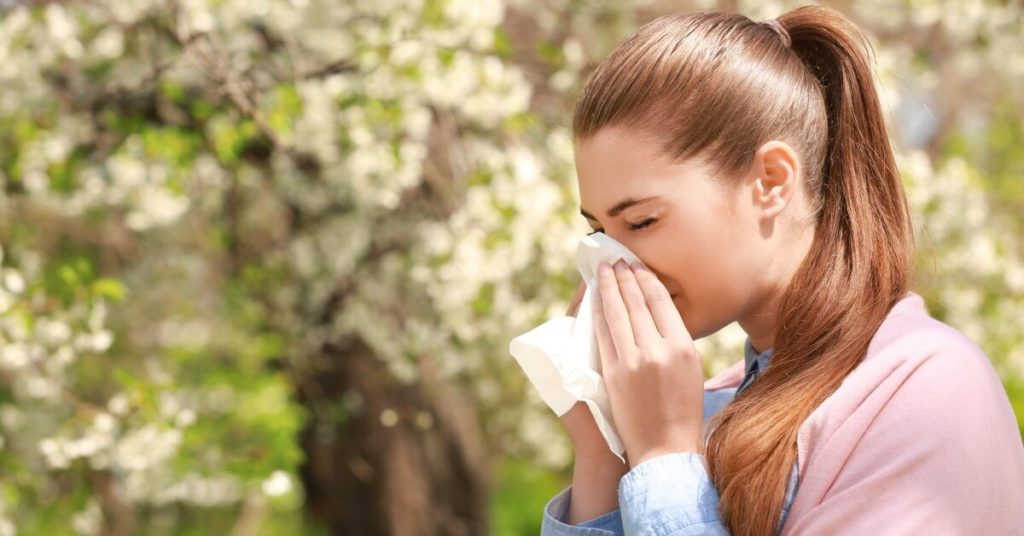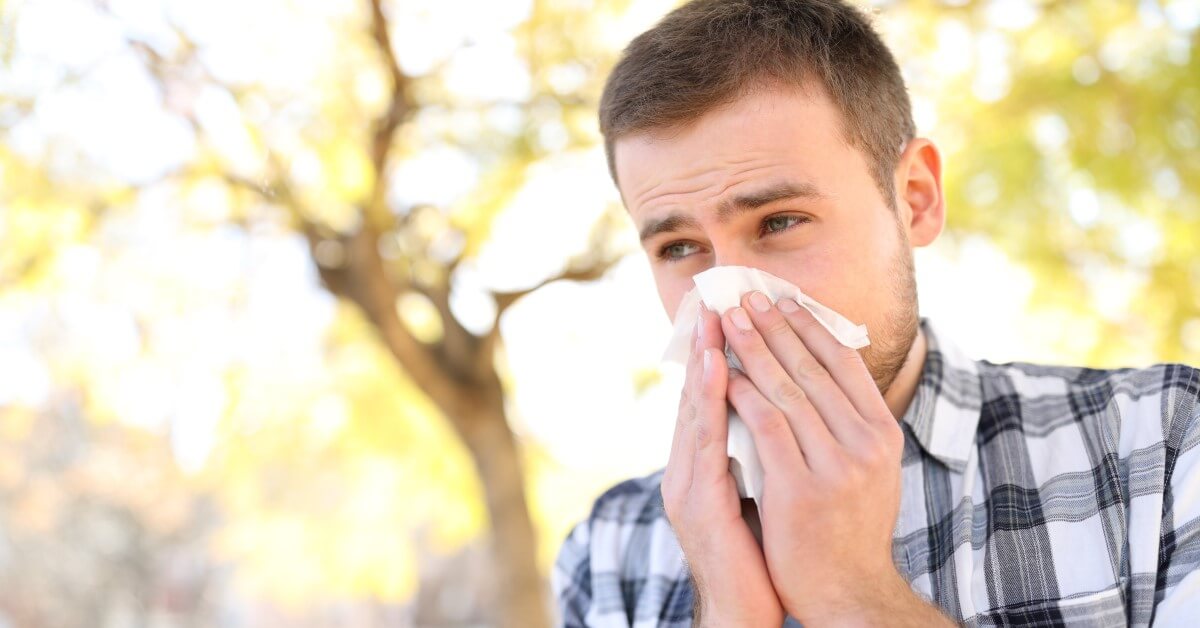
What’s a Seasonal Allergy? | Can Allergy Symptoms Be Managed? |
What’s the Takeaway?
Overview
Spring means blooming trees, flower buds, and longer days, but if you are one of the millions of people with seasonal allergies, you likely have a less rosy view of this time of year.
For one in six individuals,[1] spring marks another season of congestion, sneezing, a runny nose, and other annoying symptoms – decidedly taking the shine out of much of the warmer days.
In fact, severe seasonal allergies are associated with significant impairments in quality of life, sleep, and work performance.[2]
However, with a few reasonably simple strategies, your allergies don’t have to mean spending your life indoors or forever assuring everyone around you, “it’s just my allergies,” after yet another sneeze.
What’s a Seasonal Allergy?
Also known as allergic rhinitis or hay fever, due to historically occurring around the hay-cutting season or early summer, seasonal allergies happen when the human immune system overreacts to an outdoor allergen,[3] such as pollen from weeds, grasses, and trees whose natural means of pollination is by the wind.
Allergens are triggers that create this response in your immune system.[3] The fact that the types of plants that produce these triggers get pollinated by wind means that when they do what comes naturally, there is no escape for the allergy sufferer in outdoor settings.
When these allergens enter your body via breathing, ingestion, or through the skin, your body releases histamines to respond to what it mistakenly believes to be harmful. It is this action that then produces common allergy symptoms:[3]
- Runny or congested nose
- Itchy, watery eyes
- Sneezing
- Ear congestion
- Itchy throat, sinuses, or ear canals
- Postnasal drip
Although it’s possible to experience these types of allergies year-round, they are much less common during winter as pollen production is dormant. However, this also depends on where you live. Warmer climates, like in Florida, typically experience more pollination activity throughout the year.[4]
Can Allergy Symptoms be Managed?
Seasonal allergy sufferers likely know that over-the-counter, nonprescription medications like antihistamines can help relieve bothersome symptoms. In some severe cases, allergy shots may be administered by a healthcare professional.
However, when pollen counts are incredibly high, there are additional preventative steps that can be taken to reduce exposure:
1) Check for current pollen levels and forecasts via local TV, newspaper, or internet
2) If high pollen counts are forecasted, it is a good idea to take your allergy medication before symptoms appear
3) On dry and windy days when pollination is most active, try to stay indoors as much as possible
4) The ideal time for outdoor activities for seasonal allergy sufferers is after rain, as this helps to clear pollen from the air
5) Try to avoid outdoor activities in the early morning as this is when pollen counts tend to be highest
6) Make sure that doors and windows are closed at night or at other times when pollen counts are high to ensure your home is a ‘safe zone’
7) When you get home, remove the clothes you wore outside and take a shower to rinse any pollen from your hair and skin
What’s the Takeaway?
If you are a seasonal allergy sufferer, no one needs to tell you how much impact allergy symptoms can have on your quality of life – especially on bad days.
Sometimes it’s enough to take an antihistamine or use a nasal decongestant spray, but these approaches don’t provide complete relief for many.
Some preventative measures can help here, especially when pollen counts are higher than usual.
However, suppose your seasonal allergies are exceptionally intense. In that case, your healthcare provider may recommend diagnostic tests (skin or even blood tests) to determine the treatment method for your specific case.
Conversely, if you suspect that you may have a seasonal allergy, talk to your doctor. Knowing what is going on in your body is always the quickest path to relief.
References:
- Akhouri, S., & House, S. A. (2022). Allergic Rhinitis. In StatPearls. StatPearls Publishing.
- Dykewicz, M. S., & Hamilos, D. L. (2010). Rhinitis and sinusitis. The Journal of allergy and clinical immunology, 125(2 Suppl 2), S103–S115. https://doi.org/10.1016/j.jaci.2009.12.989
- Small, P., Frenkiel, S., Becker, A.B., Boisvert, P., Bouchard, J., Carr, S., Cockcroft, D., Denburg, J., Desrosiers, M., Gall, R.M., Hamid, Q., Hébert, J., Javer, A.R., Keith, P.K., Kim, H., Lavigne, F., Lemiàre, C., Massoud, E.A., Payton, K.B., Schellenberg, B., Sussman, G., Tannenbaum, D., Watson, W.T., Witterick, I.J., & Wright, E.D. (2007). Rhinitis : A practical and comprehensive approach to assessment and therapy. Journal of Otolaryngology, 36.
- Small, P., & Kim, H. (2010). Allergic rhinitis. Allergy, Asthma, and Clinical Immunology : Official Journal of the Canadian Society of Allergy and Clinical Immunology, 7(Suppl 1), S3. https://doi.org/10.1186/1710-1492-7-S1-S3


